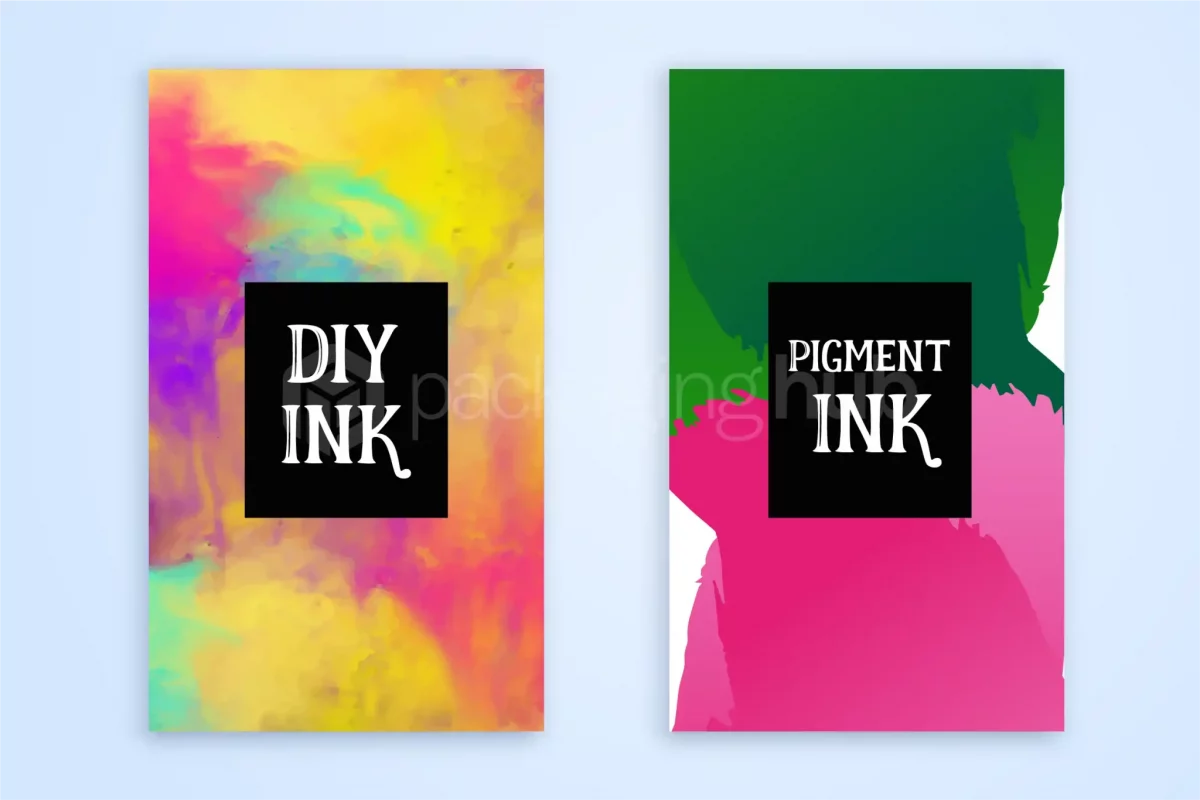Free Shipping On All Orders!
Home » Blog » Pigment Inks vs Dye Inks – Which One To Choose

So, you are looking for an excellent ink option to get the best prints for your labeling and packaging? If yes, this article can help you by informing you about the top inks you can use for these purposes. You can read details about better pigment or dye inks and what ink is made of.
Also, you can read about how they make your work more accessible as a vendor or a company. You can read about the benefits of pigment and dye inks and why they are used for certain jobs.
Table of Contents
ToggleWhen it comes to the difference between big pigment inks and dye inks, there are certain things to remember.
When we analyze the inks, they come from soluble dyes which are dissolved in a liquid carrier. Also:
Some essential ingredients of inks are solvents, additives, lubricants, colorants, resins, varnishes, drying agents, and waxes. But why does this technical information matter to you? You can not use the correct ink if you do not know the different aspects of ink ingredients. So, it is a Solvent-based ink option you can try for printing.
So, the top ingredients that matter for a company when it comes to finding the right ink are:
As we mentioned, different ingredients matter heavily for inks, and there are specific proportions that you should know about. For instance, you can have:
Another essential part of this kind of ink is solvents, which make the ink fade-proof. So, if you are looking for pigment ink, you should ensure it has the right amount of this ingredient. This ingredient helps your print be more resistant to outdoor conditions.
Also, you should ensure that the solvent in your ink has a reasonable evaporation rate. Quick drying can help you with the printing process that matters for your production.
These are some of the top ingredients you should know as a printing company when you want to know what ink is made of.
Dye inks have important ingredients in making a better printing process for your print jobs. One of their important ingredients is water-soluble dyes. These can be plant-based and work super well to help with print vividness.
So, if you want to choose a dye ink, you can use the ones with the right amount of water-based dyes. Also, you should know how good their surface tension properties are to ensure the paper surface can easily absorb them.
At the same time, they are sensitive to ozone, light, and humidity. So, ensure you get the ink least sensitive to these environmental factors to improve your end product. Owing to this and other reasons, dye inks are cheaper and may be used for less professional printing.
These factors can help determine if you need pigment or dye ink. So, these are the benefits you should know when looking for inks and what ink Is made of.
Comparing these two is really helpful when choosing something that works for your type of job. So, we will compare the two to help you decide the ink type that will work for your kind of printing.
When choosing one of them, you should know the plus points of using them. So, if you think you need to use a pigment ink type, you can have the following benefits that you must consider before choosing between pigment inks vs dye inks:
Now that we know some of the benefits of pigment inks, you can consider them for the type of printing and labeling they may help with.
You can do a better job when you know what ink is made of.
So, use it for more professional work with durability and resistance to light. These packaging inks matter greatly for your choice, so ensure you have the right amount.
Plus:
So, these benefits and drawbacks should be enough to let you make a final decision, and we will talk about dye inks in the next portion.
Now that you know dye inks may work well for some aspects of a print job, there are other benefits you should know. So, we have some top benefits that you should look to have with this kind of ink, like
If you are looking for better options, you can try using UV inks that can be super helpful to give resistance against UV light.
You should be clear about some drawbacks before you go on and use them.
You may not like them if you want the ink to dry into the paper quickly. Also, it may not be resistant to water in normal conditions, which can be a significant drawback for your print. Moreover, you can not use it for water-based mediums and with watercolors.
So, this is the most essential information you should have about these two types of pigment and dye inks. You can read about what ingredients play a significant role in their features. At the same time, you can read about how dye inks may work for certain jobs and not for others. Plus, what ink is made of?
Using pigment inks can be beneficial if you want to use them for water-resistant and good-quality jobs. At the same time, you can use dye inks if you are looking for a certain type of job. Just make sure you know which will work best for your type of job and how to choose them based on their ingredients. If you are unsure, then consult with the packaging designing experts team.

Order your stylish and durable custom boxes and packaging from a team of industry experts.